Community wildlife habitats can be created in any shared space. Offices, storefronts, schools, local parks, sidewalk greenspaces, and medians can all play a part in creating wildlife habitat. By creating community wildlife habitat, you can help offset acres of habitat that are lost to housing and urban development each year.
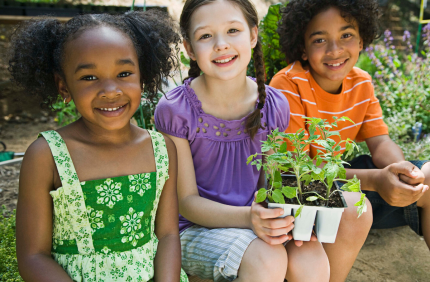
What makes a habitat?
A habitat is a combination of four elements:
- Food
- Water
- Shelter
- Space
Shared spaces in our community are a huge part of habitat restoration. When we provide habitat we create corridors that allow wildlife to pass safely through communities; this reduces wildlife fatalities and conflicts with people and domestic animals. Community habitats also increase public green spaces, which contributes to increased health and well-being for everyone. Whatever size your space is, creating wildlife habitat benefits us all.
Building a Schoolyard Habitat? Download the National Wildlife Federations Schoolyard Habitat packet with step-by-step instructions, student and teacher activities, and everything you need to get started!
Already created wildlife habitat in your community space? Apply for our certification plaque. Our program is free and open to all wildlife habitat types.
Apply for a Habitat at Home sign
Download a printable sign application (PDF)
Visit the Living with Wildlife webpages to learn more about the species you might see in your habitat, how to coexist with wildlife in urban, suburban, and rural areas, and ways you can adapt your space to prevent conflict with wildlife.
Our Community Science at Home webpage has great ways to observe wildlife and contribute to science, right where you live, work, and play!
Native Plants
Native plants are especially important in community habitats because many shared spaces are connected to, or near other public green spaces. A native plant is one that occurs naturally in a specific geographic region and was not brought there by humans. These plants have evolved alongside Washington’s wildlife and are adapted to local environmental conditions. Native plants are adapted to the climate so they're low maintenance. They also support ecosystem services like decreasing pollution and feeding wildlife.
Planting native plants can help slow the spread of invasive plants. An invasive species spreads quickly and displaces species who wildlife depends on. Using non-native plants in shared spaces should be done carefully to prevent spreading non-native plants into neighboring areas. Check with your local noxious weed control board and download the noxious weed list (PDF) to be sure you are not unintentionally planting invasive species.
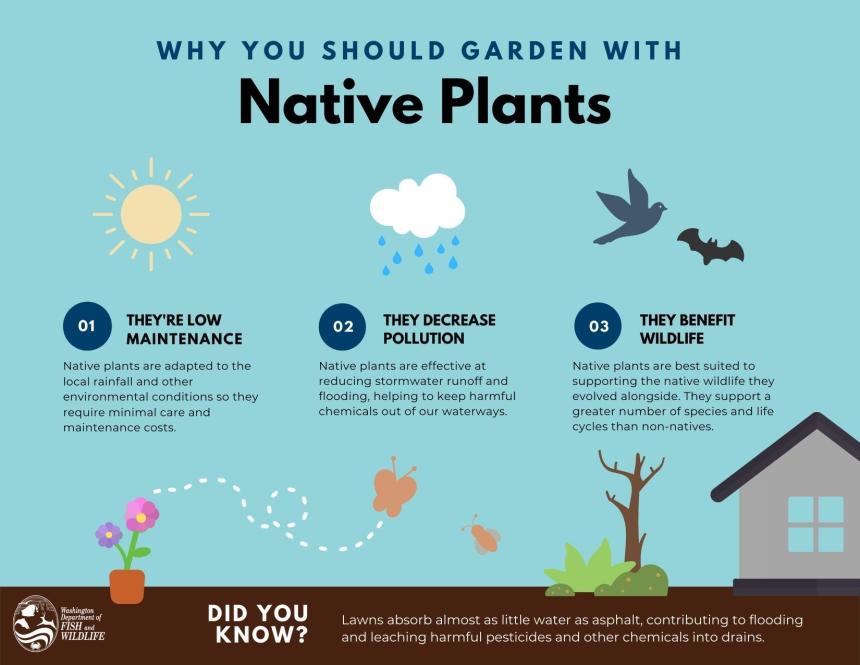
Native plants are low maintenance
Native plants are adapted to the local rainfall and other environmental conditions. They can be heartier than exotic plants and will thrive without pesticides or fertilizers.
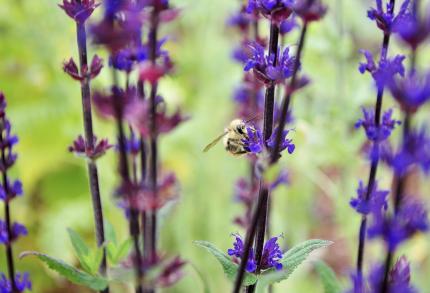
Native plants benefit wildlife and environment
Native plants are best suited to support the wildlife they evolved alongside. They support a greater number of species and life cycles than non-native plants. Research shoes that native plants are four times more attractive to pollinators than non-natives. Native oaks support more than 550 different species of butterflies and moths alone, while some non-native species support as little as five. By providing local wildlife with plants better suited to support their habitat needs, we can increase their chances of survival. Some cultivars/hybrids of native plants, or "nativars" are a preferred choice over non-native species. While nativars do not support as many species as native plants, they can provide your community space with a wider variety of color and size.
Where to find native plants
You can find native plants at many nurseries and retailers, but it can be difficult to know what to look for if you're not prepared before you go. Most counties have a conservation district that offers native plant sales in early spring and can help you decide what to look for based on your needs. Here are some resources to get you started.
Food
Plants are the best food source for wildlife
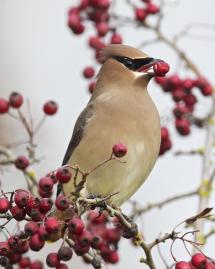
In addition to directly providing food, plants can also attract insects who benefit wildlife. Consider planting a variety of plants and food sources that can provide food year-round for wildlife. The more foods (plants and insects) at the base of the food chain, the more diversity of species your area can support. This variety, known as biodiversity, strengthens local habitats and ecosystems, which make them more resilient to the impacts of climate change and human development.
In shared community spaces, keep your neighbors in mind. Some berry-producing plants that wildlife eat might be toxic to children or pets that access the area, such as choke cherry and snowberry. Plan carefully and do your research to pick native plants that benefit wildlife and your community.
National Audubon has a native plant search engine. Enter your zip code and it will provide several lists to guide you through picking plants. It will give you a list best for birds and other wildlife, a list of all native plants in your area, and a resource page with you closest Audubon chapter (to reach out to with questions), native plant nurseries, seed sellers, and other resources.
- Native plant list for deer (PDF)
- Native plants for Creating habitat for bats
Remember – wildlife has developed adaptations that allow them to survive harsh winter conditions without human intervention. The best way to help wild animals survive a severe winter is to promote year-round quality habitat. Feeding wildlife who live in your community is never a good idea, even when it seems that other available food sources may be scarce.
Water
All wildlife need water to survive. Some species get their hydration from the foods they eat, and some drink from water that collects in leaves and flower blooms. As droughts linger and temperatures rise, water may be harder to find for wildlife. We can help by adding water features to our community habitats. Keep in mind that many artificial water sources need regular care. Anything that contains sitting water can become a breeding ground for mosquitoes or become contaminated and unhealthy for wildlife if not refreshed every one to three days.
Adding features that contain moving water, such as fountains, can be a good solution for a community space. You can also choose to use plants who accumulate rainwater to supplement your habitat in extreme heat. Rain gardens and ponds also require less daily care. If you have a naturally occurring water source in your habitat like a river, steam, lake, or pond, then keep it free of pollution, address erosion issues, and manage invasive aquatic plants to support water for wildlife.
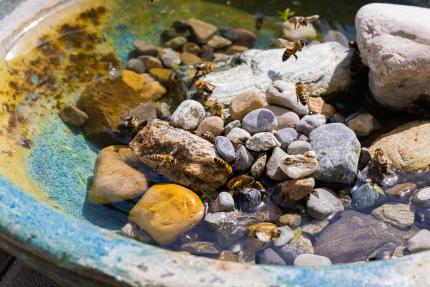
Insect and Puddling Dishes
When temperatures are high water evaporates quickly from leaves and flowers. During this time, pollinators such as bees and butterflies will often use water dishes or shallow bird baths. Because these insect can't fly or swim in water, shallow water is safest for them. Providing shallow pans with low water levels or stones for perching can help pollinators and other insects. These are easy to make and a great way to add a watchable wildlife feature.
-
Puddling Dishes: Fill a shallow dish with a mix of sand, soil, or compost. Add water to create mud for butterflies to drink and extract nutrients from. Place the dish either in the ground or place it higher on a flat surface. Check often to keep it moist. Avoid over filling to keep standing water from sitting and attracting mosquitoes.
-
Insect watering dish: In a shallow dish place a variety of stones of various sizes. Fill the dish with an inch of water. The stones allow insects and small birds to land and drink safely. Drain completely and replace water every two to three days to keep it clean and avoid mosquitoes.
Rain gardens
If you live on the wetter side of Washington, consider a rain garden in your space. Native plants and rocks used in these gardens collect water that can be accessed by wildlife, while providing shelter and passage for many species.
A rain garden is a garden of native flowers, shrubs, and other plants that are planted in a shallow depression and designed to collect rainwater from places that can’t absorb water, like driveways, roads, roofs, and lawns. When rain flows down these areas, it collects everything humans have left behind - harmful chemicals, fertilizer, garbage, oil, and more. This chemical cocktail of water is called storm water runoff. Rain gardens effectively filter and retain this water, reducing the amount of water that reaches the sewer system.
Extreme heat
During heat waves, consider these extra steps to “take the heat off” our wild neighbors.
-
Put out extra water dishes of various sizes, hide them under shrubs and plants to give animals various places to find both shelter and a drink. If wildlife does not have to expend energy searching for water, they will be able to handle the hot temperatures for longer.
-
Refill water sources often. Heat evaporates water and smaller species might not get a chance to drink.
-
Move bird baths into the shade to reduce water temperatures and make the water last longer.
-
Leave water out and filled at night. In extreme heat some species will shift their activity times to night, when temperatures are cooler, and they can move safely move throughout their territories.
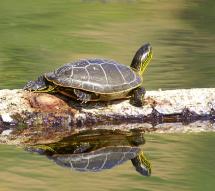
Manmade Water Features
Ponds, waterfalls, fountains, and other water features can create a relaxing area and benefit wildlife as well. Research before installation to find ways to keep the water clean and healthy. Moving water helps prevent the growth of bacteria and algae so chemicals are not needed. Consider water depth when filled and install wildlife escape ramps, choose rough surfaces, or add a gradient to the edges if wildlife could become trapped. If the feature is in-ground, choose plants around the edges that provide cover for wildlife and can be used by smaller animals to enter and exit the water safety. Always consider who lives in your area and how the water feature might be used. In drought conditions, water features can attract many animals, both small and large.
Wildlife Escape Ramps
One thing we can all do for wildlife is consider smaller species when we have water features around us. If you have a human-made water source in your area, whether it is meant for wildlife or not, it is important to consider how wildlife will interact with it, especially when animals get overheated during heat waves or droughts. Places like pools, human-made ponds, water troughs, hot tubs and more can trap wildlife if they do not have a way to escape. Small creatures such as amphibians, insects, and small mammals are even more susceptible. Pollinators like bees and butterflies can’t swim and won’t be able to fly away if they fall into water.
-
Add vegetation along the edges of all water areas to give smaller animals something to climb out on.
-
Create gradual slopes using stones or sediment that mimic natural shorelines to give small animals a place to emerge.
-
Create or buy a wildlife escape ramp for larger water features like pools, hot tubs, and water troughs.
Learn to build your own Wildlife Friendly Escape Ramps or watch the Lesson: Constructing Wildlife Ramps.
Natural Ponds, Streams, Lake or Rivers
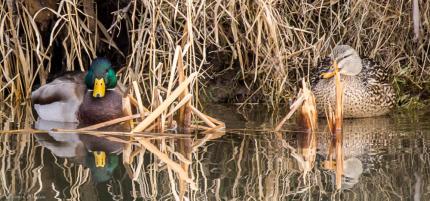
If you have a natural water feature in your habitat, you have a fully functioning ecosystem in your care! Consider yourself a steward of this space and look for ways that you can improve the health of the water and its surroundings.
- Replace invasive species with native plants. Look for species known to live along water edges. These plants will be the best for supporting the species in the water, preventing erosion along water edges, and increasing the health of the aquatic habitat.
- Limit or eliminate the use of pesticides and other chemicals near the water. Consider runoff and downstream effects of what goes on around this habitat.
- Never introduce new species to this area. If you have an invasive species already present, use these resources or reach out to your county noxious weed control board for help.
Shelter
Wildlife need a place to rest, escape from the weather, and hide from predators. They also need space places to raise their young. Some examples of natural shelter include dense shrubs, log piles, evergreen shrubs, rock gardens, or snags. You can supplement shelter and space to raise young by providing artificial habitat items such as bird and bat houses, bee hotels, and amphibian and reptile dens.
Plant layers for wildlife
To support a variety of wildlife, think about your plants in layers. Planting ground cover allows prey animals to forage on the ground safely. Medium height plants like flowers and low shrubs feed pollinators and birds, provide perches, create places for insects, and hide nests from predators. Trees provide canopy where animals forage, perch, and hide while resting. Variety is key for any habitat so consider high, medium, and low layers when you choose the plant species for your space. Layers also help plants thrive by allowing the soil to absorb and retain additional water and protect each other from harsh winter weather.
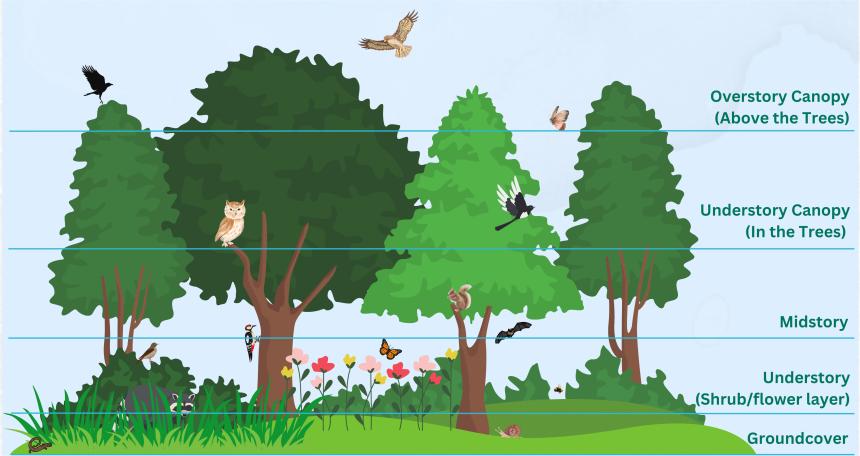
Dead standing trees, also known as snags, are so valuable to wildlife that they are often referred to as, “the wildlife tree”. For birds and mammals, these trees provide roosts, nesting sites, food, and shelter. Dead branches can be trimmed as needed but keep snags standing if they don’t pose a safety hazard. Learn more about snags
Rock piles and small shelters
Rock and stick piles make great habitat for some of our smallest species, such as amphibians, reptiles, and insects. These are easy elements to include in any size space. Add a small pile of rocks to a container or build a rock wall into your garden. Include logs in your landscape to create a whole ecosystem that supports wildlife. Some animals will use dug out holes for dens and winter shelters. Leaf piles benefit many of our native pollinators when left over the winter and through early spring.
Bird houses
Observe what bird species you may have seen already present in your community and choose a house that will work for those species. Small birds will not want to nest near larger birds who prey on them. Hanging or wall-mounted bird houses are perfect for small spaces, while larger spaces can include bird houses mounted on posts, poles, and buildings. Remember to clean out birds houses annually.
NestWatch helps you find the right bird house for the birds in need in your region and habitat. WDFW has woodworking project plans for many local species.
Bat houses
A bat house is a great way to provide daytime shelter to bats during spring and fall transitions. Bat houses can be mounted high on buildings or set out on free standing posts. Mounting bat houses in trees will give predators easy access to the bats. Learn more about finding the right place for a bat house with our care and installation guide (PDF). Read our, "Adventures with Pacific Northwest Bat Houses" blog to learn more about how bats use bat houses. Find building plans for bat houses designed for Washington bats. Plants love bat guano, so placing flowers and non-food plants under bats houses can fertilize plants and give bat droppings a safe place to fall. For an in-depth look at bat houses in the Pacific northwest, down Building Homes for Bats: A guide for bat houses in British Columbia (PDF), from Community Bat Programs of BC. Learn more about bats in Washington.
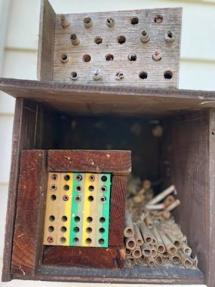
Bee hotels
Pollinators and other insects need shelter too. One of the best things you can do is adjust your gardening practices to increase nesting habitat for pollinators. Instead of raking leaves as soon as they fall, leave them in natural spaces. Remove them from walkways and place the excess leaves at the base of trees. When flowers die at the end of the season, trim off the heads but save the stems attached; many insects use these hollow stems as winter protection. You can also make a solitary bee or insect hotel, but make sure to clean it each year to prevent invasive species from taking over.
Know that bee hotels need annual harvesting and maintenance. Be sure to have a care plan for bee hotels before adding them to a shared habitat. Build a bee house and learn about bee house maintenance and care.
A source of cover can often double as a place to raise young wildlife. Birdhouses, small trees, shrubs, or plants for pollinators are all good examples. You can also provide nesting materials such as yarn, pet hair, dried grass, and straw.
Sustainable Practices
There are many simple ways to practice resource conservation in your Habitat at Home!
1. Choose pesticide-free plants
Look for plants that not treated with pesticides. In many nurseries raised plants, pesticides are present throughout the entire plant it has been treated with pesticides, even if the label says wildlife friendly. This includes floral nectar and pollen. Even low levels of pesticides can have an impact on insect pollinators. Check with your nursery to verify this information if you can't find it on the label that comes with your plant. Pesticides can go by many names, including but not limited to imidacloprid and clothianidin.
2. Grow native plants
A native plant is one that occurs naturally in a specific geographic region and was not brought there by humans. These plants have evolved alongside native wildlife and are adapted to local environmental conditions. Native plants are low maintenance, decrease pollution, and benefit wildlife and provide ecosystem services.
3. Let nature be
Use natural mulch by leaving the leaves in natural spaces and only removing them from walkways. Place swept leaves at the base of trees to provide nutrients in the winter. Prune flower heads but leave the stems for insect habitat over the winter. In the spring avoid cutting your lawn for a couple months to help provide pollinator food or replace your lawn with native groundcover or pollinator plants.
4. Recognize your habitat
Apply for a community habitat sign to recognize your backyard as a wildlife habitat through our Habitat at Home Program. For a national certification, check out the National Wildlife Federation's Certified Wildlife Habitat Program.
